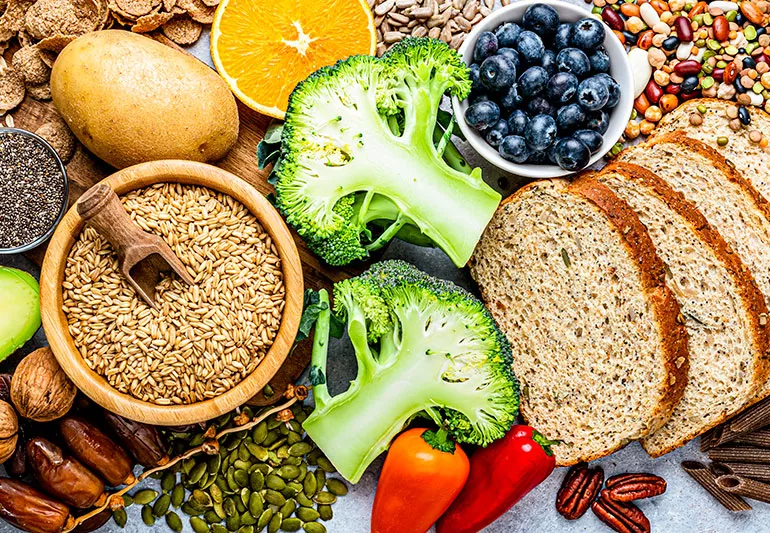Disclaimer: The information provided in this article is for educational purposes only and should not be considered a substitute for professional medical advice, diagnosis, or treatment.
There are countless buzzwords and trendy diets that come and go, but one important nutrient that often gets overlooked is fibre. Despite it’s humble reputation, fibre plays a crucial role in maintaining our overall health and well-being. Get ready to discover why fibre should be a staple in your daily meals and how it can positively impact your body from head to toe.
What is Fibre?
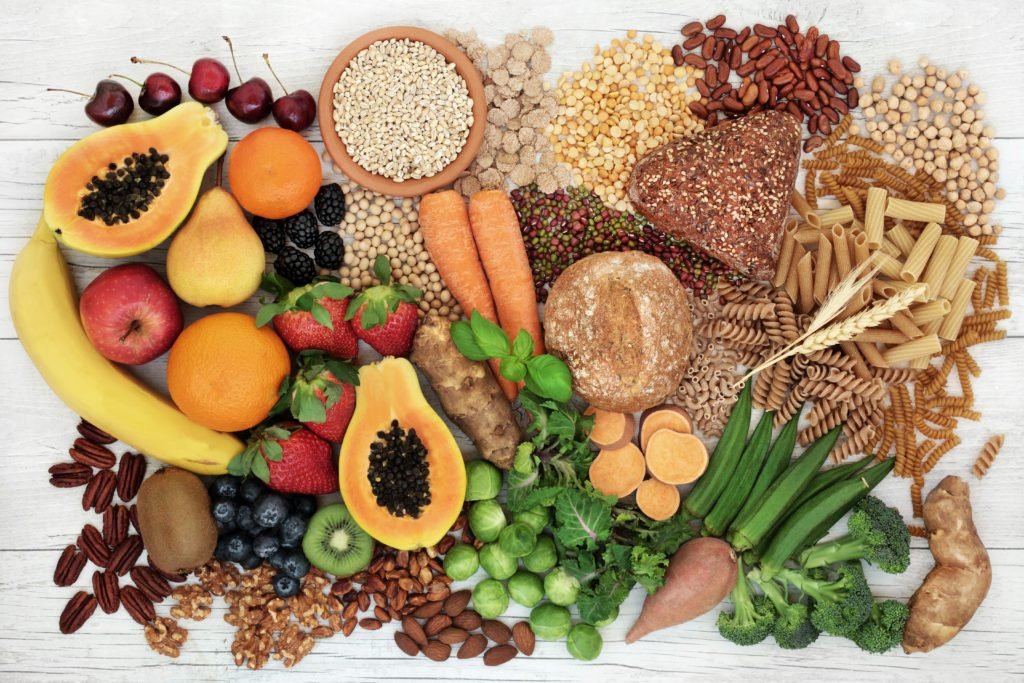
Let’s start with the basics. Fibre, also known as roughage or bulk, is a type of carbohydrate that our bodies cannot digest. Unlike other carbohydrates, such as sugars and starches, which break down into glucose, fibre passes through our digestive system relatively intact. There are two main types of fibre: soluble and insoluble, each with it’s own unique properties and health benefits.
Soluble Fibre
Soluble fibre dissolves in water, forming a gel-like substance in our digestive tract. This type of fibre is found in foods such as oats, barley, legumes, fruits and vegetables. Some key characteristics of soluble fibre include:
- Slows down digestion, keeping you feeling full for longer
- Helps regulate blood sugar levels by slowing glucose absorption
- Lowers cholesterol levels by binding to bile acids and eliminating them from the body
Insoluble Fibre
Insoluble fibre, on the other hand, does not dissolve in water. Instead, it remains largely unchanged as it moves through our digestive system. This type of fibre is found in foods like whole grains, wheat bran, nuts and the skins of fruits and vegetables. Insoluble fibre is known for:
- Promoting regular bowel movements by adding bulk to the stool
- Helping prevent constipation and other digestive issues
- Supporting the health of the digestive tract by encouraging the growth of beneficial gut bacteria
The Fibre-Health Connection

Now that we’ve covered the basics of fibre, let’s explore the numerous ways in which this mighty nutrient supports our health and well-being.
Digestive Health
One of the most well-known benefits of fibre is it’s positive impact on digestive health. By promoting regular bowel movements and preventing constipation, fibre helps keep our digestive system running smoothly. Insoluble fibre, in particular, adds bulk to the stool, making it easier to pass through the intestines. This can help reduce the risk of developing hemorrhoids and other digestive disorders.
Moreover, fibre serves as a prebiotic, meaning it feeds the beneficial bacteria in our gut. These bacteria, known as probiotics, play a vital role in maintaining a healthy digestive system by supporting nutrient absorption, strengthening the gut lining and boosting immune function.
Weight Management
Fibre can be a powerful ally in the battle against unwanted weight gain. Because fibre-rich foods tend to be more filling and satisfying, they can help you feel full for longer, reducing the likelihood of overeating or snacking on unhealthy options. Soluble fibre, in particular, slows down digestion, which can help regulate appetite and keep cravings at bay.
Studies have shown that individuals who consume higher amounts of fibre tend to have a lower body mass index (BMI) and are less likely to develop obesity. By incorporating fibre-rich foods into your diet, you can support your weight management goals and maintain healthy body composition.
Heart Health
Fibre’s benefits extend far beyond the digestive system, playing a crucial role in maintaining a healthy heart. Soluble fibre has been shown to lower cholesterol levels, specifically LDL (low-density lipoprotein) or “bad” cholesterol. By binding to bile acids in the digestive tract, soluble fibre helps remove them from the body, forcing the liver to produce more bile acids using cholesterol from the bloodstream. This process effectively lowers overall cholesterol levels, reducing the risk of heart disease.
Additionally, fibre-rich diets have been associated with lower blood pressure and a reduced risk of developing hypertension. This is likely due to the combined effects of fibre’s ability to promote weight management, regulate blood sugar levels and support overall cardiovascular health.
Blood Sugar Regulation
For individuals with diabetes or those at risk of developing the condition, fibre can be a valuable tool in managing blood sugar levels. Soluble fibre, in particular, slows down the absorption of glucose from the digestive tract into the bloodstream. This helps prevent rapid spikes in blood sugar levels, which can be especially beneficial for those with insulin resistance or diabetes.
Moreover, high-fibre diets have been linked to a reduced risk of developing type 2 diabetes. By improving insulin sensitivity and promoting a more gradual release of glucose into the bloodstream, fibre helps maintain stable blood sugar levels over time.
Colon Health
Fibre plays a vital role in maintaining the health of the colon, the large intestine responsible for the final stages of digestion. By promoting regular bowel movements and reducing the time waste materials spend in the colon, fibre helps lower the risk of developing colon-related issues such as diverticulitis and colon cancer.
Insoluble fibre, which adds bulk to the stool, is particularly beneficial for colon health. It helps keep the colon walls clean and reduces the likelihood of harmful substances staying in contact with the colon lining for extended periods.
Conditions Linked to Low-fibre Diets
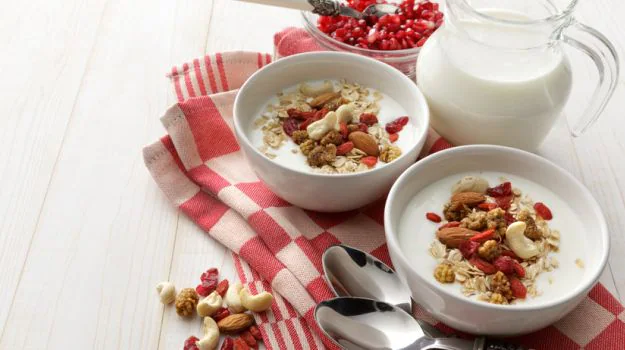
- Constipation: A diet low in fiber can lead to constipation, as fiber helps to add bulk to the stool and promotes regular bowel movements.
- Diverticular disease: A low-fiber diet is a risk factor for diverticular disease, a condition in which small pouches called diverticula form in the wall of the large intestine.
- Hemorrhoids: Low-fiber diets can increase the risk of hemorrhoids, as fiber helps to soften stools and reduce straining during bowel movements.
- Obesity and weight gain: Fiber-rich foods tend to be more filling and have fewer calories than low-fiber foods, so a low-fiber diet may increase the risk of obesity and weight gain.
- Cardiovascular disease: A low-fiber diet has been linked to an increased risk of heart disease and stroke, as fiber can help to lower cholesterol levels and reduce inflammation.
- Metabolic syndrome: A low-fiber diet has been associated with metabolic syndrome, a cluster of conditions that increase the risk of heart disease, stroke and type 2 diabetes.
- Colon cancer: A diet low in fiber has been linked to an increased risk of colon cancer, as fiber helps to promote regular bowel movements and reduce the time that waste products stay in the colon.
- Irritable bowel syndrome (IBS): A low-fiber diet may exacerbate IBS symptoms, as fiber can help to regulate bowel movements and reduce inflammation.
- Diverticulitis: A low-fiber diet is a risk factor for diverticulitis, a condition in which the diverticula become inflamed or infected.
- Diabetes: A low-fiber diet has been linked to an increased risk of type 2 diabetes, as fiber can help to regulate blood sugar levels and improve insulin sensitivity.
It’s important to note that a low-fiber diet is not the only factor that contributes to these conditions and other factors such as genetics, lifestyle and overall diet quality also play a role.
Best Sources of Fibre
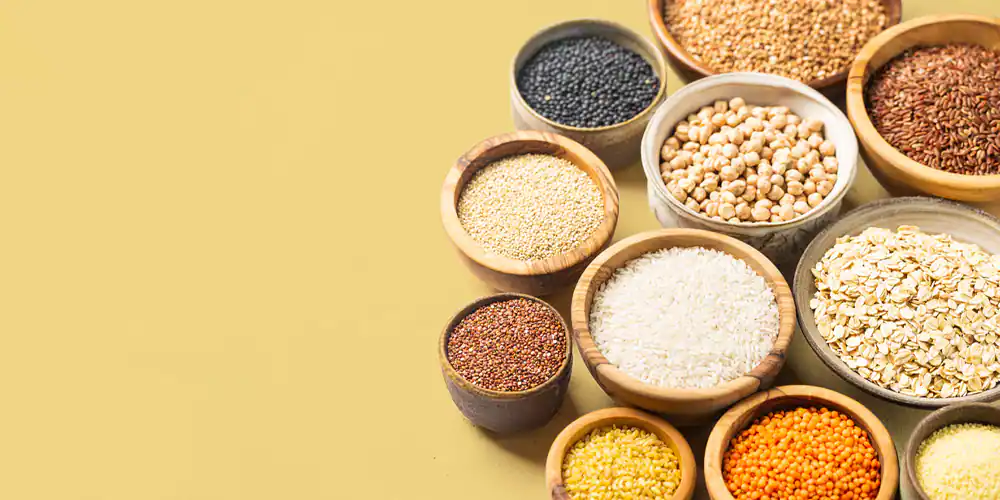
To reap the numerous health benefits of fibre, it’s important to include a variety of fibre-rich foods in your diet. Here are some of the best sources of both soluble and insoluble fibre:
Soluble Fibre Sources
| Food | Soluble Fiber Content |
|---|---|
| Oats | 4 grams per cup (cooked) |
| Barley | 6 grams per cup (cooked) |
| Black beans | 5.4 grams per 3/4 cup (cooked) |
| Lima beans | 5.3 grams per 3/4 cup (cooked) |
| Broccoli | 2.6 grams per 3.5 ounces (cooked) |
| Brussels sprouts | 2.6 grams per 3.5 ounces (cooked) |
| Carrots | 2.4 grams per cup (cooked) |
| Pears | 3.1 grams per medium pear |
| Avocados | 2.1 grams per half avocado |
| Flaxseeds | 2.1 grams per tablespoon |
| Hazelnuts | 3.3 grams per 1/4 cup |
| Psyllium husk | 7 grams per tablespoon |
| Lentils | 1.8 grams per 1/4 cup (cooked) |
Insoluble Fibre Sources
| Food | Insoluble Fiber Content |
|---|---|
| Wheat bran | 1/2 cup (23 grams) |
| Barley | 1/2 cup, cooked (100 grams) |
| Brown rice | 1/2 cup, cooked (100 grams) |
| Quinoa | 1/2 cup, cooked (93 grams) |
| Oats | 1/2 cup, dry (40 grams) |
| Whole wheat bread | 1 slice (30 grams) |
| Rye bread | 1 slice (30 grams) |
| Pumpernickel bread | 1 slice (30 grams) |
| Nuts (almonds, pistachios, etc.) | 1 ounce (28 grams) |
| Seeds (chia, flax, etc.) | 1 ounce (28 grams) |
| Legumes (beans, lentils, etc.) | 1 |
How Much Fibre Do We Need?

Well, it seems like the recommended fiber intake varies depending on who you ask and what you read. According to some sources, the average American only gets half of their recommended fiber needs, which is like trying to fill a swimming pool with a garden hose.
The U.S. Department of Agriculture and U.S. Department of Health and Human Services Dietary Guidelines for Americans, 2020-2025, break down fiber recommendations by sex and age. For adults under 50, it’s 28 grams per day for men and 22 grams for women. For adults 51 and older, it’s 21 grams for women and 28 grams for men. It’s like a fiber version of the Goldilocks story, where everyone needs a different amount to get it just right.
If you’re looking for a general rule of thumb, some sources suggest that you should aim for 14 grams of fiber per 1,000 calories you consume daily. So, if you’re on a 2,000-calorie diet, you’d need about 28 grams of fiber.
But here’s the thing: most Americans only get about 16 grams of fiber per day, which is like trying to fill a car tire with a bicycle pump. It’s not enough to get the job done. So, it’s a good idea to aim for more fiber-rich foods in your diet.
In conclusion, the amount of fiber you need is a bit like trying to find the right amount of salt in your popcorn. Too little and it’s bland; too much and it’s inedible. But somewhere in the middle, you’ll find the perfect balance.
Incorporating Fibre into Your Diet
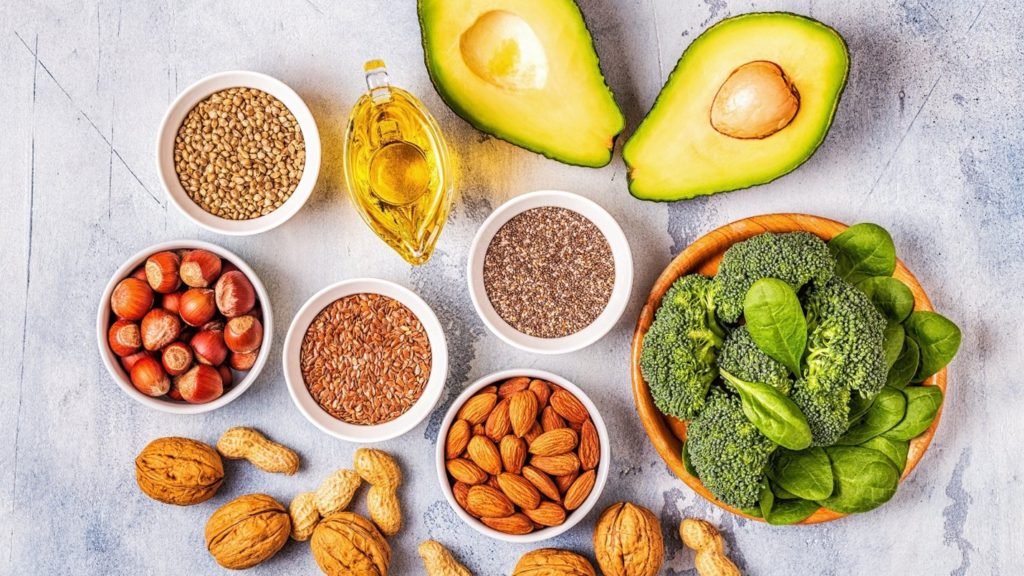
Now that you know the importance of fibre and the best sources to obtain it, let’s explore some practical ways to incorporate more fibre into your daily meals.
Start Your Day with a Fibre-Rich Breakfast
Kickstart your day with a breakfast that includes whole grains, fruits and nuts. Some excellent options include:
- Oatmeal topped with berries, nuts and seeds
- Whole-grain toast with avocado and sliced tomato
- Homemade granola with rolled oats, nuts and dried fruit
Snack on Fibre-Rich Options
Instead of reaching for processed snacks, opt for fibre-rich alternatives like:
- Fresh fruit with nut butter
- Carrot and celery sticks with hummus
- Air-popped popcorn seasoned with herbs and spices
Incorporate Legumes into Your Meals
Legumes, such as beans, lentils and peas, are excellent sources of both soluble and insoluble fibre. Try incorporating them into your meals by:
- Adding lentils to soups and stews
- Replacing meat with beans in tacos or burritos
- Enjoying hummus as a dip or spread
Choose Whole Grains
Over Refined Grains When selecting grains, opt for whole-grain varieties instead of refined options. Some simple swaps include:
- Choosing whole-wheat bread over white bread
- Replacing white rice with brown rice or quinoa
- Using whole-wheat pasta instead of regular pasta
Eat the Skins and Peels
Many fruits and vegetables contain a significant amount of fibre in their skins or peels. When possible, eat these parts to maximize your fibre intake. Some examples include:
- Leaving the skin on apples and pears
- Eating the skin of potatoes (after washing thoroughly)
- Enjoying the peel of kiwi fruits
Fibre Supplements: Yay or Nay?
While it’s always best to obtain fibre from whole food sources, some individuals may find it challenging to meet their daily fibre needs through diet alone. In these cases, fibre supplements may seem like an attractive option. However, it’s important to approach fibre supplements with caution and under the guidance of a healthcare professional.
Fibre supplements, such as psyllium husk or methylcellulose, can help increase overall fibre intake and alleviate constipation. However, they should not be relied upon as a sole source of fibre, as they lack the additional nutrients and benefits found in whole food sources.
When considering fibre supplements, it’s crucial to start with a low dose and gradually increase as needed to avoid digestive discomfort. Additionally, be sure to drink plenty of water when taking fibre supplements to prevent constipation and other digestive issues.
Potential Side Effects and Precautions

While fibre is generally safe and beneficial for most people, there are some potential side effects and precautions to keep in mind.
Digestive Discomfort
Increasing your fibre intake too quickly can lead to digestive discomforts, such as bloating, gas and abdominal pain. To avoid these issues, gradually increase your fibre intake over several weeks, allowing your digestive system time to adapt. Additionally, be sure to drink plenty of water to help fibre move smoothly through your digestive tract.
Nutrient Interactions
Fibre can interact with certain nutrients, such as calcium and iron, reducing their absorption. To minimize this effect, consume fibre-rich foods separately from foods high in these nutrients, or consider taking supplements at a different time of day.
Precautions for Specific Conditions
Individuals with certain digestive disorders, such as inflammatory bowel disease (IBD) or Crohn’s disease, may need to be cautious about their fibre intake. In some cases, high-fibre diets can exacerbate symptoms or lead to intestinal blockages. If you have a pre-existing digestive condition, consult with your healthcare provider before making significant changes to your fibre intake.
Conclusion
In a world where fad diets and trendy superfoods come and go, fibre remains a tried-and-true nutrient that offers a wide range of health benefits. From promoting digestive health and supporting weight management to lowering cholesterol levels and regulating blood sugar, fibre is a crucial component of a balanced, nutritious diet.
By incorporating a variety of fibre-rich foods into your daily meals, such as whole grains, fruits, vegetables and legumes, you can ensure that you’re providing your body with the tools it needs to thrive. Remember to increase your fibre intake gradually, drink plenty of water and listen to your body’s cues to find the optimal balance for your individual needs.
So, the next time you’re browsing the grocery store shelves or planning your meals, remember to give fibre the attention it deserves. Your body will thank you for it in the long run, as you enjoy the numerous benefits of this humble yet powerful nutrient. Here’s to embracing the fibre-filled life and unlocking the key to lasting health and well-being!

